Results 6,851 to 6,860 of 12094
Thread: Anandtech News
-
04-11-17, 08:34 AM #6851
Anandtech: The AMD Ryzen 5 1600X vs Core i5 Review: Twelve Threads vs Four at $250
Since the announcement of AMD’s mid-range offerings, it was clear that Ryzen 5 is going to have some major advantages over its direct price competition. For $250, the top Ryzen 5 1600X gives six cores and twelve threads of AMD’s latest microarchitecture, while $250 will only get you four cores and no extra threads for the same price. Even though the Intel Core i5 based on Kaby Lake will have an instructions-per-clock advantage, it’s a hard hill to climb when the competition has 50% more cores and 200% more threads. In this review, we take the Ryzen 5 1600X and see if it smashes the market wide open.
More...
-
04-11-17, 08:34 AM #6852
Anandtech: CyberLink Launches PowerDVD 17 with UHD Blu-ray and VR HMD Support
CyberLink has been regularly updating their multimedia playback software / PC DVD & Blu-ray players. While ArcSoft dropped out of the software Blu-ray player market a few years back, the only other legal (i.e, one that includes licenses for all required codecs) player - Corel's WinDVD Pro, receives fairly spaced out upgrades. As the HTPC market shifts from a local media-heavy scenario to one where OTT (over-the-top) content like YouTube and Netflix form the main part of the experience, it has become important for commercial software media players to evolve. CyberLink realized this early, with a mobile-centric experience getting introduced in PowerDVD 12. With PowerDVD 14, the technology updates (such as inclusion of HEVC support) were accompanied by a shift in the marketing message from a 'software Blu-ray and DVD player' to a 'media player for power users'.
CyberLink is launching PowerDVD 17 today. Similar to the focus on mobile devices in PowerDVD 12, the time is ripe for them to focus on the next big content consumption device - the virtual reality head-mounted displays (HMDs). PowerDVD 17 Ultra has a special VR mode that works with the HTC Vive as well as the Oculus Rift for an immersive media experience.
PowerDVD 17 is also the fist certified software Blu-ray player capable of playing back Ultra HD (4K) Blu-rays on a PC. The hardware requirements are quite stringent, though. In addition to the two GIGABYTE boards mentioned below, the ASRock Fatal1ty Z270 Gaming-ITX/ac is also an option for a UHD Blu-ray playback-capable HTPC. Pioneer is currently the only choice for PC-compatible UHD Blu-ray optical drives.
Coming back to the new features in PowerDVD 17, UHD Blu-ray playback support includes HDR10 capabilities also. The player can also upconvert SDR content to HDR using some proprietary algorithms as part of the TrueTheater feature set. As mentioned earlier, HMD support is available for playback of 360 videos. The UI and navigation is also optimized for HMDs in the VR mode. There is also some additional support for YouTube playback, particularly with respect to 360 and 4K videos.
The introduction of VR HMD support enables CyberLink to be an end-to-end media player irrespective of the device used for consuming the content.
It is no secret that the onerous DRM requirements have made Blu-rays a pain for HTPC enthusiasts. PowerDVD 17 requires an active Internet connection for the first time playback of an Ultra HD Blu-ray movie. Consumers who appreciate the extra video and audio quality from local discs have to put up with these annoyances. In addition to UHD Blu-ray playback, some of the other features such as the TrueTheater effects are not yet matched in a user-friendly manner by excellent open source media players like Kodi. That said, many users appreciate Kodi's open source background, its flexibility, and, obviously the fact that it is free.
That brings us to the final aspect - pricing. PowerDVD 17 is available in four flavors ranging in price from $60 to $100.
CyberLink also has a subscription-based offering - PowerDVD Live. It has the same feature set as that of PowerDVD Ultra, but, is priced at $15 / $45 on a quarterly / annual basis. The gallery below also includes a detailed comparison of the features available in each version.
Gallery: CyberLink Launches PowerDVD 17 with UHD Blu-ray and VR HMD Support





More...
-
04-11-17, 01:08 PM #6853
Anandtech: ASUS Launches GeForce GTX 1080 & GTX 1060 Models With Faster RAM
ASUS has released graphics cards based on NVIDIA’s GeForce GTX 1060 and 1080 GPUs that are equipped with faster memory. The new add-in-boards (AIBs) are designed to offer greater performance in high resolutions than reference designs and enable ASUS to charge a premium for the higher FPS.
Back in February when NVIDIA cut the price on the GTX 1080, the company also announced that they would be working with partners to sell factory overclocked cards with higher speed grades of memory. At launch the fastest grades available for the GTX 1080 and GTX 1060 were 10Gbps GDDR5X and 8Gbps GDDR5 respectively; however in the last year, 11Gbps GDDR5X and 9Gbps GDDR5 have become available. Now those faster memory grades are being made available to their partners for use in factory overclocked cards, giving partners more configuration options for their factory overclocked SKUs.
For partners, this marks their first real opportunity to sell cards with memory overclocks. While NVIDIA’s GPUs have been able to support these higher speeds, the stock configurations for the GTX 1080 and GTX 1060 were already pushing their respective RAM types to their limit, leaving partners no real headroom for the kind of stable and consistent overclocks required for factory overclocking.
At a hardware level, things are pretty straightforward for GTX 1080 cards; vendors can now grab Micron’s 11Gbps GDDR5X chips and use them in the place of 10Gbps chips. Things are a bit less clear on the source of the GDDR5 however. The only manufacturer with an official 9Gbps part listed is Samsung, whose K4G41325FE is still at the "Customer Sample" phase. More importantly however, that chip is only offered in a 4Gb density, whereas NVIDIA has used 8Gb chips for both the GTX 1080 and GTX 1060 6GB. So it will be interesting to see just how 9Gbps GTX 1060s are equipped.
Now, back to ASUS’ GeForce GTX 10 cards with faster memory. At present, the company offers two of such boards: the ROG Strix GeForce GTX 1080 OC Edition 8 GB 11 Gbps as well as the ASUS GeForce GTX 1060 OC Edition 6 GB 9 Gbps. The two AIBs belong to different classes of products, but in both cases ASUS did something more than just soldered faster memory chips to PCBs.
The ASUS ROG Strix GeForce GTX 1080 OC Edition 11 Gbps GDDR5X is based on the company’s proprietary PCB design with an 8+2 phase VRM, one 6-pin and one 8-pin PCIe power connectors. The enhanced power supply circuitry and an additional power connector enable ASUS to increase GPU and memory frequencies from those recommended by NVIDIA and ensure some additional headroom for end-user overclocking. Meanwhile, ASUS does not disclose exact GPU clock rates of its flagship GeForce GTX 1080, which means that the company is still finalizing them.
To ensure proper cooling of the GPU, VRM and memory, ASUS equips its ROG Strix GeForce GTX 1080 OC Edition 11 Gbps with a 2.5-wide cooling system featuring six heat pipes and three fans (which stop rotating at low GPU temperatures). As an added bonus, the cooler features ASUS’ user-controllable Aura Sync RGB lighting.
Gallery: ASUS ROG Strix GeForce GTX 1080 OC Edition 11 Gbps GDDR5X





The ASUS GeForce GTX 1060 OC Edition 6 GB 9 Gbps also uses ASUS’ own PCB as well as the company’s DirectCU II cooling system with four heatpipes and two fans. Obviously, since this is an OC Edition AIB, its GPU frequency is higher than that on reference cards, but ASUS does not publish it. The card does not belong to the ROG or the Strix families, it is not the top-of-the-range GeForce GTX 1060 from ASUS, so expect company to offer something faster based on the GP106 GPU over time.
Gallery: ASUS GeForce GTX 1060 OC Edition 6 GB 9 Gbps





ASUS has not announced MSRPs for its GeForce GTX 1080 11 Gbps and GeForce GTX 1060 6 GB 9 Gbps products, but since they are listed on its website, they are going to show up on shelves soon and thus prices will be revealed. As usual, bear in mind that prices will vary depending on the region.Specifications of ASUS GeForce GTX 1080 11 Gbps and GTX 1060 9 Gbps ASUS
ROG Strix GeForce GTX 1080
OC Edition
11 GbpsNVIDIA
GeForce GTX 1080
Founders EditionASUS
GeForce GTX 1060
OC Edition
9 GbpsNVIDIA
GeForce GTX 1060
Founders EditionStream Processors 2560 1280 Texture Units 160 80 ROPs 64 48 Core Clock (MHz) 1670 - 1695 (?) 1607 1506 - 1531 (?) 1506 Boost Clock (MHz) 1809 - 1835 (?) 1733 1708 - 1746 (?) 1708 Memory Capacity 8 GB 6 GB Type GDDR5X GDDR5 Clock 11 Gbps 10 Gbps 9 Gbps 8 Gbps Power 1×8-pin PCIe
1×6-pin PCIe
>180 W1×8-pin PCIe
180 W1×6-pin PCIe
~150 W150 W VRM 8+2 phases 5+1 phases ? 3+1 phases PN, Additional Details ROG-STRIX-GTX1080-O8G-11GBPS - GTX1060-O6G-9GBPS - Launch Date Q2-2017 5/2016 Q2-2017 8/2016 Launch Price ? $699 ? $449
Related Reading:
- ASUS Demonstrates ROG Swift PG27UQ: 4K, 144 Hz, HDR, DCI-P3 and G-Sync
- GeForce GTX 1080 Price Cut to $499; NVIDIA Partners To Begin Selling 10-Series Cards With Faster Memory
- The NVIDIA GeForce GTX 1080 Ti Founder's Edition Review: Bigger Pascal for Better Performance
- NVIDIA Announces NVIDIA Titan Xp Video Card: Fully Enabled GP102 for $1200
More...
-
04-11-17, 03:24 PM #6854
Anandtech: HighPoint RocketStor 6618 Thunderbolt 3 DAS: 8-Bays, Up to 96 TB, 2.7 TB/s
HighPoint has started to ship its RocketStor 6600-series Thunderbolt 3 RAID enclosures that can accommodate up to eight storage devices. The enclosures support all popular RAID levels and can enable up to 1.6 GB/s throughput with HDDs or up to 2.7 GB/s throughput with SSDs, which is in line with other 8-bay TB3 storage boxes. Meanwhile, one of the key characteristics of the RocketStor 6618T enclosure is its $999 price point.
The HighPoint RocketStor 6600-series family consists of three models: the RocketStor 6618A tower enclosure with hardware RAID and 8 bays, the RocketStor 6618T tower enclosure with software RAID and 8 bays as well as the RocketStor 6674T rackmount enclosure with software RAID and 16 bays. The DAS boxes support hot swapping of 2.5”/3.5” storage devices, RAID in 0, 1, 5, 6, 10 and 50 modes, intelligent fan control, audible alarms, and come with HighPoint’s storage management and monitoring software for Apple’s macOS and Microsoft Windows. The manufacturer ships its RocketStor 6600-series enclosures unpopulated and provides a list of compatible drives: the boxes support a wide range of enterprise and NAS-class devices, including 12 TB HDDs as well as up to 4 TB SSDs from various makers, including HGST, Seagate and Samsung.
As for performance, the HighPoint RocketStor 6600-series are designed for various professional applications and are aimed to support simultaneous streaming, editing, and backup of UHD video or other data. When an 8-bay RocketStor 6618A enclosure us populated with HDDs, its maximum sequential read performance is rated at up to 2000 MB/s, with SSDs, its performance as listed increases to 2700 MB/s. The RocketStor 6618T (with software RAID) is a bit slower, offering up to 1800 MB/s throughput with HDDs and up to 2400 MB/s with SSDs. At present, HighPoint does not reveal performance numbers for the rackmount 16-bay RocketStor 6674T.
Just like competing DAS products from other manufacturers, the HighPoint RocketStor systems feature two Thunderbolt 3 ports, making it possible to daisy chain a display or another TB3 device to the storage arrays. The maker bundles one active Thunderbolt 3 cable certified for 40 Gb/s.The HighPoint RocketStor 6600-Series DAS with Thunderbolt 3 RocketStor 6618A RocketStor 6618T RocketStor 6674T Number of Bays 8 hot-swappable bays for 2.5" or 3.5" HDDs or SSDs 16 hot-swappable bays HDD/SSD Interface SAS/SATA SATA SAS/SATA List of Compatible HDDs/SSDs Link (PDF) Capacity HDD RAID 0: 96 TB (8 × 12 TB)
RAID 5: 84 TB (8 × 12 TB)RAID 0: 192 TB
(16 × 12 TB) (?)SSD RAID 0: 32 TB (8 × 4 TB)
RAID 5: 28 TB (8 × 4 TB)RAID 0: 64 TB
(16 × 4 TB) (?)RAID 0/1/5/6/10/50 RAID0 HDD 2000 MB/s 1800 MB/s unknown SSD 2700 MB/s unknown RAID5 HDD 1700 MB/s 1600 MB/s unknown SSD 2700 MB/s 2400 MB/s unknown RAID Block Size Up to 1 MB Up to 128 KB unknown RAID Controller HighPoint RAID-on-Chip I/O controller and 512 MB cache memory with ECC Software RAID that uses host system's CPU and RAM Ports 2 × Thunderbolt 3 PSU integrated Dimensions (W x H x L) 144 × 330 × 257 mm
5.67 × 13 × 10.12 inch2U Cables Included USB-C (Thunderbolt 40Gb/s or USB 3.1 10Gb/s) cable Software HighPoint Storage Monitoring and Management Suite Price (MSRP) $1299 (?) $999 unknown
One of the key things about the HighPoint RocketStor 6618-series Thunderbolt enclosures are their recommended prices: the more advanced model 6618A is priced at around $1300, whereas the model 6618T (with software RAID and lower performance) is set to cost around $1000. With such price points, HighPoint aims to make Thunderbolt 3-based RAID storage solutions considerably more accessible compared to pre-configured off-the-shelf DAS systems.
HighPoint claims that its RocketStor 6618T is now available in North America at its MSRP of $999. While the enclosure is available, in some cases it comes populated with HDDs and comes at appropriate price points. Meanwhile, Amazon offers empty RocketStor 6618T for $1092.19 (so, not quite $999) as well as empty RocketStor 6618A for $1299.
Gallery: HighPoint RocketStor 6618





Related Reading:
- QNAP at CES 2017 - Thunderbolt 3 and Xeon D NAS Units, Residential Gateways, and More
- LaCie Launches Rugged and d2 Thunderbolt 3 Storage Devices
- Promise Launches Pegasus3 External Storage via TB3: Up to 48 TB, 1.6 GBps
- LaCie Announces Bolt3: 2 TB External SSD at 2.8 GBps over Thunderbolt 3
- AKiTiO Thunder3 PCIe SSD Thunderbolt DAS Review
- Thunderbolt 3 in Action: Akitio Thunder3 Duo Pro DAS Review
More...
-
04-12-17, 07:52 AM #6855
Anandtech: ECS LIVA Z Plus Kaby Lake vPro UCFF PC Review
Ultra-compact form factor PCs for business deployments have become popular in the recent past. Compared to traditional UCFF PCs, these business use-cases require ease of management and administration by IT staff. Intel supplies a set of features under the vPro tag for this purpose. This is enabled on select CPU SKUs. OEMs also have limited options for certain components such as the LAN controller. ECS launched the LIVA Z Plus earlier this year, and it was one of the first UCFF Kaby Lake PCs to come with a vPro SKU. Read on for a performance evaluation of the system as well as a discussion of some unique features of the LIVA Z Plus platform.
More...
-
04-12-17, 08:54 AM #6856
Anandtech: Giveaway: OCZ RD400 & VX500 SSDs
In the mood for some free hardware? Well then you're in luck: our awesome community team in conjuction with OCZ is holding a giveaway for a trio of SSDs. The prizes include the 512GB and 256GB PCIe (M.2 w/adapter) versions of OCZ's top-tier M.2 SSD, the M.2-based RD400, along with the 512GB version of their VX500 SATA SSD.
The giveaway itself is open now, and will be running through April 24th. You can find the full details for entering the giveaway over on the storage section of our forums.Toshiba OCZ Giveaway Prize Specifications Capacity RD400
256 GBRD400
512 GBVX500
512 GBController Toshiba TC58NCP070GSB Toshiba TC358790 NAND Toshiba 15nm MLC Sequential Read 2600 MB/s 2600 MB/s 550 MB/s Sequential Write 1150 MB/s 1600 MB/s 515 MB/s Random Read IOPS 210k 190k 92k Random Write IOPS 140k 120k 64k Form Factor M.2 2280 single-sided 2.5" SATA Protocol NVMe 1.1b over PCIe 3.1 x4 AHCI Write Endurance 148 TB 296 TB 296 TB Warranty 5 years
More...
-
04-13-17, 03:29 AM #6857
Anandtech: Dell’s Ultrasharp 30-inch 4K OLED Now On Sale: UP3017Q for $3500
One of the biggest bits of news to come out of CES 2016, over a year ago, was Dell announcing a new beacon in OLED monitors: a 3840x2160 panel measuring 30-inch diagonal using an OLED display was set to come to market. When we reported on it back at CES, they stated a $4999 price point for March 31st. What happened over the next 12 months was interesting: some journalists doing ‘hands-on’ reviews at tech shows, but nothing coming to retail, followed by plenty of CES 2017 news that the display had been shelved due to image quality issues. Well roll around another quarter, and it seems that Dell is ready to sell it, and shipping for this $3499 beast is only 1-2 weeks away.
The Dell UltraSharp UP3017Q is a 30-inch display with a 3840×2160 resolution, response time of 0.1ms, and is set to run at 60 Hz (not 120 Hz as some outlets originally reported). The monitor can reproduce 1.07 billion colors (in this case we assume 10-bit), it covers 100% of Adobe RGB color space as well as and 97.8% of DCI-P3 color space (used for digital movie projection by the U.S. movie industry and is expected to be adopted in televisions and in home cinema), and 85.8% of Rec2020. The manufacturer declares a 1,000,000:1 dynamic contrast ratio, due to the characteristic black of OLED displays.Specifications of the Dell Ultrasharp UP3017Q UP3017Q Panel 76.19cm (30-inch) Native Resolution 3840 × 2160 Maximum Refresh Rate 60 Hz Response Time 0.1 ms (black to white) Brightness 300 cd/m² (typical)
0.0005 cd/m² (minimum)Contrast 1000000:1 Viewing Angles 178°/178° horizontal/vertical Pixel Pitch 0.1713 mm² Pixel Density 147 ppi Display Colors 1.07 billion Color Gamut Support Adobe RGB: 100%
Rec 709: 100%
DCI-P3: 97.5%
Rec2020: 85.8%Stand Tilt (5~21°),
pivot (+90°, -90°) and
height (100 mm) adjustableInputs 1 × DisplayPort 1.2
1 × HDMI 2.0
1 × USB Type-C (DP 1.2. PD 100W).Audio None Launch Price $3499
The UltraSharp UP3017Q is a thin monitor with narrow bezels, but not remarkably thin like OLED TVs, due to the internal power supply unit as well as complex logic inside. The monitor features a mini DisplayPort (mDP) 1.2 connector, an HDMI 2.0 port, and a USB type-C port which can be used for video and data connectivity, as well as power delivery up to 100W.
The Emissive electroluminescent layer in an organic light-emitting diode is made of an organic compound that emits light in response to an electric current. The organic semiconductor layer is situated between two electrodes and does not require a backlight. As a result, it can display deep black levels unlike LCD panels which also use various kinds of backlighting. Curved TVs and monitors are also possible, since the emissive electroluminescent layer is very thin and can take different shapes.
While OLED technology can deliver deep blacks, high contrast ratio and exceptional colors, it is not free of drawbacks. Colors can shift over time, and the organic layer may degrade over prolonged amount of time. To keep the lifespan of the OLED panel maximized inside the UltraSharp UP3017Q, Dell originally advertised a special integrated presence detector into the front panel of the display, which switches the monitor off when nobody uses it, though it is not clear if this is still present. Another disadvantage of OLEDs is a possibility of static image burn-in. The UP3017Q has a special pixel-shifting technology to try and inhibit this.
The Dell UltraSharp 30 OLED monitor will cost $3499 and is available to order in the United States. The display at this point is only aimed at professionals that work in color-critical environments such as graphic arts and photography. However, due to the colors, contrast, and ultra-fast response time, the UltraSharp UP3017Q will be a dream display for gamers, prosumers and other users thatvalue quality.
OLED panels are considerably more expensive to produce than modern LCD panels, partly because of lower yields. In 2015, an executive from LG Electronics said that yields of OLED panels had reached 80% and would continue to grow. At the International CES 2016, Kwon Bong-suk, the head of LG’s TV business, said that the company had cut prices of OLED TVs in the U.S. by 45% late in 2015. As a result, LG expected sales of OLED televisions to triple in 2016. Price reduction of OLED TVs indicates that production costs of organic light-emitting diode panels are going down. Perhaps, over time, the Dell UltraSharp UP3017Q will also become more affordable, or Dell will release an OLED display for a wider audience.
Original Source: @ChrisK101010
More...
-
04-13-17, 08:18 AM #6858
Anandtech: The MSI GT83VR Titan Review: 1080 Times 3
About two years ago, we looked at the latest creation from the minds of MSI. The GT80 Titan was their boldest move yet, and set the bar for performance, featured the world’s first fully mechanical keyboard on a gaming laptop, and packed in one of the largest displays available, with the 18.4-inch FHD panel. This was the only Broadwell quad-core laptop we tested, since the mobile quad-cores were very short lived, and were quickly replaced by Skylake. It featured two NVIDIA GTX 980M graphics cards in SLI, and sat atop our Notebook Bench with the highest performance we’d seen, at least until NVIDIA’s Pascal came along.
More...
-
04-13-17, 11:28 AM #6859
Anandtech: GIGABYTE Lists GA-J3455N-D3H: Apollo Lake with COM, LPT, PS/2, D-Sub and P
GIGABYTE has added its first Intel Apollo Lake-based desktop motherboard to its product list. The platform is designed primarily for low-power entry-level PCs, but the manufacturer decided to tailor its J3455N-D3H also for customers who need various legacy I/O technologies, indicating that this board was perhaps orignally designed for a specific customer but is now being released to the wider public. The mainboard is equipped with a host of older interfaces, including COM, LPT, PS/2, D-Sub and PCI.
Just like the name suggests, the GIGABYTE GA-J3455N-D3H is based on the the Intel Celeron J3455 processor (four Goldmont cores clocked at 1.5/2.3 GHz, 2 MB cache, dual-channel DRAM controller, HD Graphics 500, 10W TDP) that feature Intel’s ninth-generation graphics architecture (Gen9) as well as a refined media playback engine with hardware-accelerated playback of 4K video encoded using HEVC and VP9 codecs. The Mini-ITX motherboard is equipped with two DDR3L SO-DIMM slots (supporting up to 16 GB of DDR3L-1866), two Realtek GbE controllers, four SATA connectors (two controlled by the ASMedia ASM1061), one HDMI 1.4 output (up to 3840×2160 at 30 Hz), a connector for a TPM module, USB 3.0 headers (additional USB 2.0 ports are supported using the internal header and a Genesys Logic USB 2.0 hub) and so on.
In addition to the aforementioned regular I/O capabilities of a modern PC, the GIGABYTE GA-J3455N-D3H also features a number of legacy interfaces. The latter includes two COM ports, an LPT port header, PS/2 connectors for keyboard and mouse, a D-Sub output for displays, as well as a PCI slot for various add-on cards (and such cards may carry additional legacy interfaces, such as PATA, etc.). While the presence of the connectors makes the motherboard a viable candidate for a system running legacy applications, it should be noted that Intel’s Apollo Lake is not supported by Windows 7, 8, Vista or XP. Windows 10 does support legacy hardware, including COM, PCI and other interfaces, but the problem is those old software applications that use COM ports or PCI cards might not work in Windows 10, or require VMs and abstraction to do so. Therefore, to use them, one will need to install Windows 7 or XP on a virtual machine, which is not always convenient. Failing this, a Linux distribution might be a preferred option.
While the GA-J3455N-D3H motherboard is heading to retail, the presence of two GbE ports indicates that GIGABYTE either plans to offer the platform to corporate customers, or is already shipping it to interested parties. If the latter is the case, it looks like GIGABYTE has clients who need more or less modern low-cost PCs with legacy interfaces in their corporate networks. It's always easier to replace a $500 PC connected to a $500k machine than to replace the machine, after all.GIGABYTE's Intel Apollo Lake Motherboard GA-J3455N-D3H CPU Intel Celeron J3455
4C/4T Goldmont
1.5 - 2.3 GHz
2MB cache
10 W TDPGraphics HD Graphics 500
12 EUs
250 - 750 MHzPCH Integrated into CPU Memory 2 GB DDR3L-1866 pre-installed
Two SO-DIMM slots,
up to 16 GB of DDR3L-1866Ethernet 2 × Realtek GbE controllers Display Outputs D-Sub (implementation unclear)
HDMI 1.4Storage 2 × SATA 6 Gbps (SoC)
2 × SATA 6 Gbps (ASM1061)Audio Realtek ALC887
7.1 channel audioUSB 2 × USB 3.0 Type-A
2 × USB 2.0Other I/O 2 × COM ports
LPT internal header
2 × PS/2
PCIForm-Factor Mini-ITX OS Windows 10 Detailed Specifications Link
GIGABYTE has not announced MSRP of its J3455N-D3H motherboard or its actual release date. Keeping in mind that the COM, PS/2 and LPT controller, the additional SATA controller as well as a PCIe-to-PCI bridge all cost money, we expect GIGABYTE’s Apollo Lake-based platform to cost more than the base Apollo Lake solutions available.
Related Reading:
- ECS LIVA Z Fanless Dual-LAN Apollo Lake UCFF PC Review
- ECS Preps LIVA Z: Apollo Lake-Based Nettop with 4K and USB-C Support
- CES 2017: GIGABYTE Shows Passive Apollo Lake BRIX in Embedded UCFF
- Launch of Intel’s Apollo Lake NUCs Gets Closer as Intel Lists Them on Web Site
- Intel Quietly Launches Apollo Lake SoC: Goldmont CPU, 6 SKUs, 6 & 10 Watts
- Intel Readies New NUCs Based on Kaby Lake and Apollo Lake SoCs
- Intel Unveils New Low-Cost PC Platform: Apollo Lake with 14nm Goldmont Cores
More...
-
04-13-17, 01:12 PM #6860
Anandtech: Western Digital Expands Purple Lineup with a 10 TB Helium-Filled HDD
Western Digital has expanded its Purple lineup of hard drives, aimed at video surveillance applications, with a 10 TB helium-filled HDD. The drive is optimized for write-intensive workloads and supports various technologies that minimize the number of potential errors due to the high-number of incoming data streams. The new WD Purple is also the company’s first 10 TB HDD with a 5400 RPM spindle speed and a large cache.
The WD Purple 10 TB drive (WD100PURZ) is based on the HelioSeal platform featuring seven PMR (perpendicular magnetic recording) platters with ~1.4 TB capacity apiece, which it inherited from last year’s top-of-the-range HDDs. The increased areal density of the platters allowed the hard drive to increase its sustained transfer speed from host to drive to 210 MB/s, or by ~18% compared to the previous-generation helium-sealed WD Purple 8 TB HDD (WD80PUZX, 178 MB/s). This is at the same 5400 RPM spindle speed and at a slightly lower power consumption (up to 6.2 W vs up to 6.4 W). Just like other hard drives with a 10 TB capacity, the new WD Purple is equipped with a 256 MB DRAM buffer, which may further increase the real-world performance of the HDD against its predecessors.
Since the WD Purple hard drives are purpose-built for video surveillance applications, they support the ATA streaming extension of the SATA standard as well as a number of WD proprietary technologies, including AllFrame 4K cache policy management and firmware enhancements to optimize data flows during playback and writing. All WD Purple drives can work with up to 64 cameras and are rated for a 180 TB/year workload. In addition, high-capacity WD Purple HDDs are optimized for operation in NVRs and DVRs with more than eight drives and support time-limited error recovery technology (TLER), which prevents drive fallout caused by extended HDD error recovery processes.Comparison of Western Digital's WD Purple HDDs WD100PURZ WD80PUZX WD60PURX WD50PURX Capacity 10 TB 8 TB 6 TB 5 TB RPM 5400 RPM Interface SATA 6 Gbps DRAM Cache 256 MB 128 MB 64 MB Helium-Filling Yes No Data Transfer Rate (host to/from drive) 210 MB/s 178 MB/s 170 MB/s 150 MB/s MTBF unknown 1 million hours Rated Workload (read and write) 180 TB/year Acoustics (Seek) 29 dBA 26 dBA Power Consumption Sequential read/write 6.2 W 6.4 W 5.3 W Idle 5 W 5.7 W 4.9 W Sleep 0.5 W 0.7 W 0.4 W Warranty 3 Years Price (as of April 2017) $399.99 $281.99 $214 $200 $0.04 per GB $0.035 per GB $0.035 per GB $0.04 per GB 25 GB per $ 28.39 GB per $ 28.03 GB per $ 25 GB per $
Western Digital claims that the new WD Purple 10 TB is compatible with new and existing video surveillance systems (including chassis, chipsets, etc.) and thus can be used for new and current deployments (except those that require drives with 512B/512e sectors – the new WD Purple only support 4Kn sectors). The manufacturer has already started to ship the new hard drives to its partners and they will be available shortly for $399.99.
While the addition of a 10 TB HDD into the WD Purple series is a significant event, the fact that Western Digital began to roll out 10 TB helium-filled hard drives with a 5400 RPM spindle speed is even more important (until recently, WD used to offer only 8 TB helium-filled 5K HDDs). With the introduction of a 10 TB product with a reduced spindle speed, Western Digital can launch WD Red and WD My Book hard drives of the same capacity in the coming weeks or months. Meanwhile, it is interesting to note that recently Western Digital cut down the price of its WD Purple 8 TB HDD by 30% and it can now be acquired for $281.99 from Amazon.
Gallery: Western Digital Expands Purple Lineup with a 10 TB Helium-Filled HDD





Related Reading:
- Western Digital Introduces Its First Helium-Filled HDDs for Consumer Applications
- Western Digital Announces Ultrastar He12 12 TB and 14 TB HDDs
- Western Digital Adds Helium-Filled WD Gold 10 TB HDD to Lineup
More...
Thread Information
Users Browsing this Thread
There are currently 18 users browsing this thread. (0 members and 18 guests)





 Quote
Quote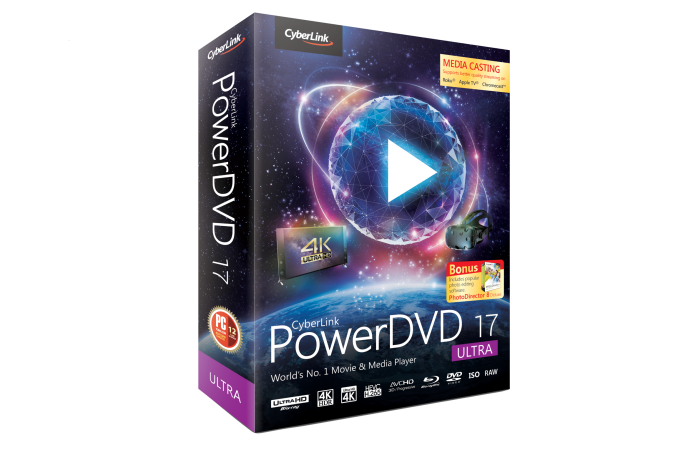
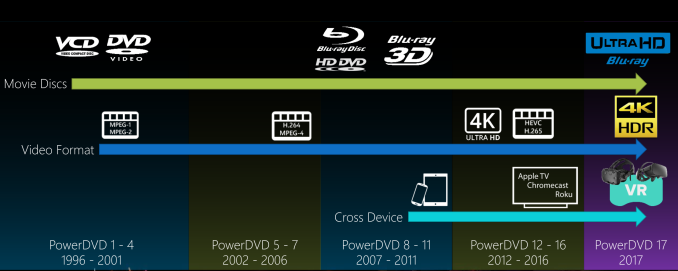
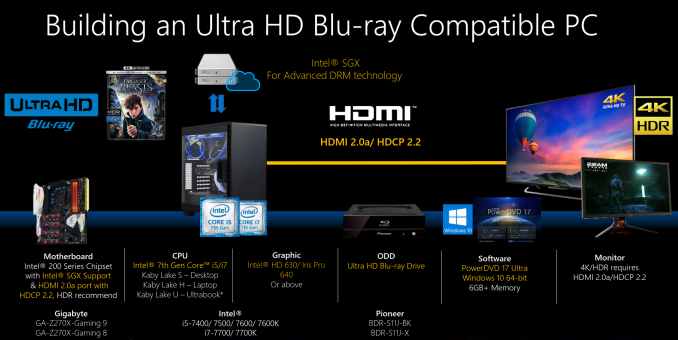

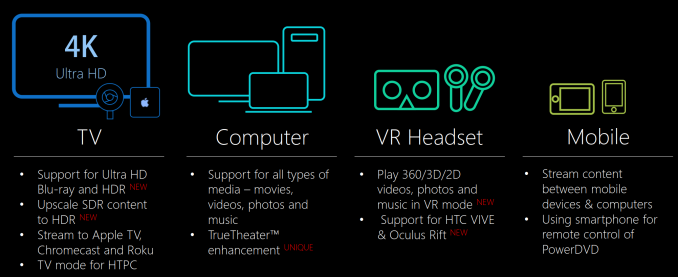
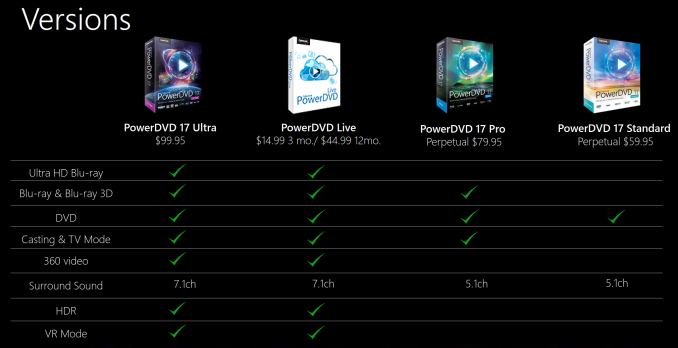
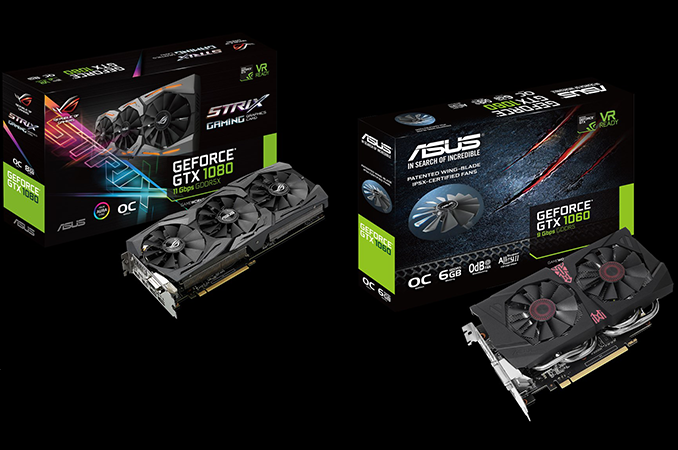
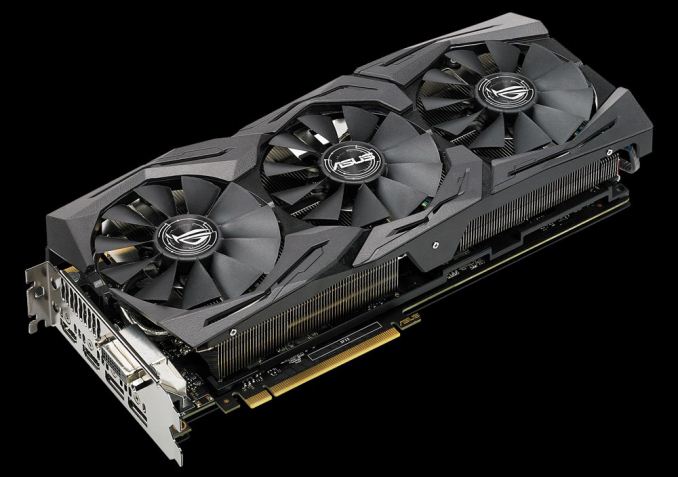

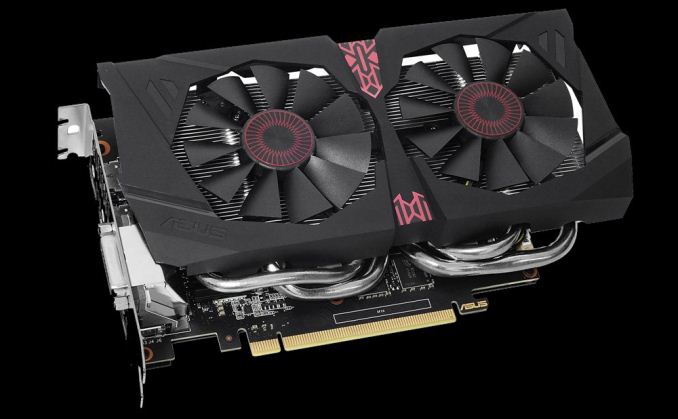
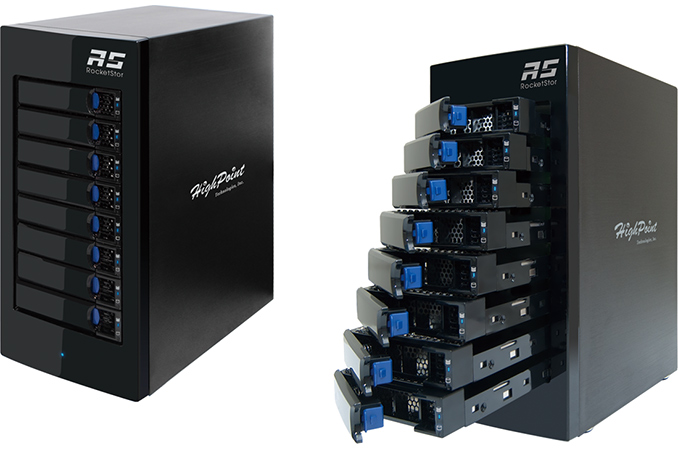

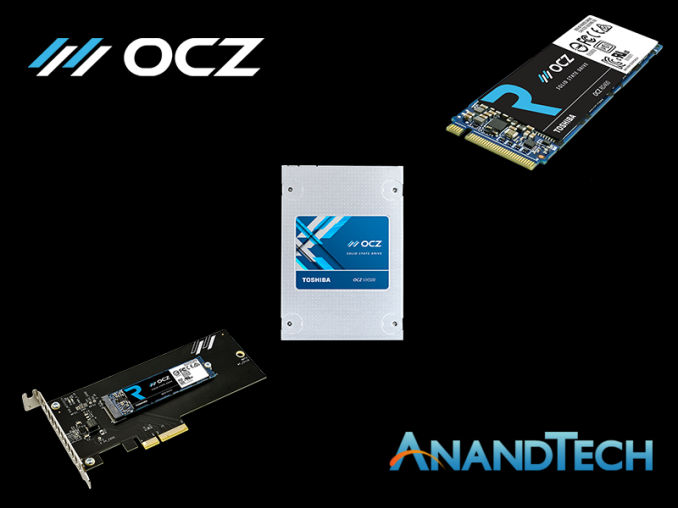
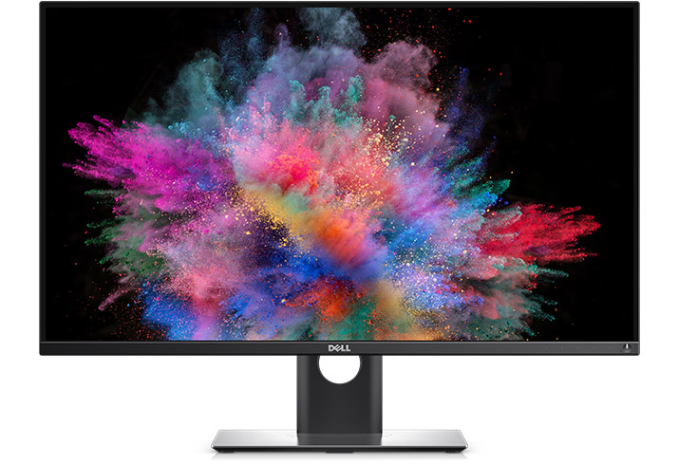
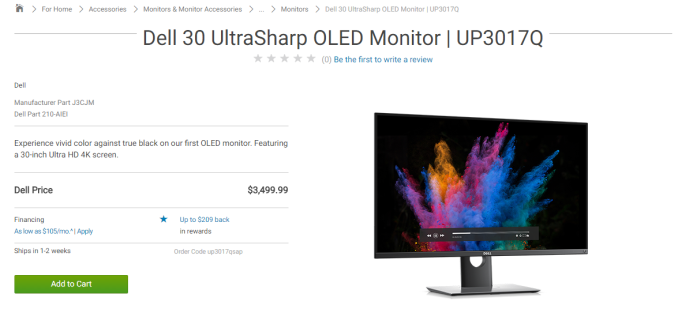


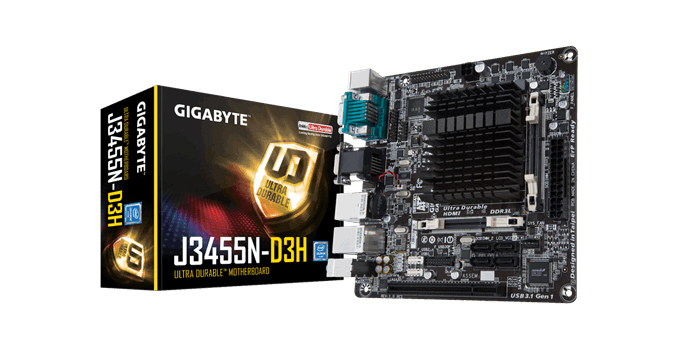
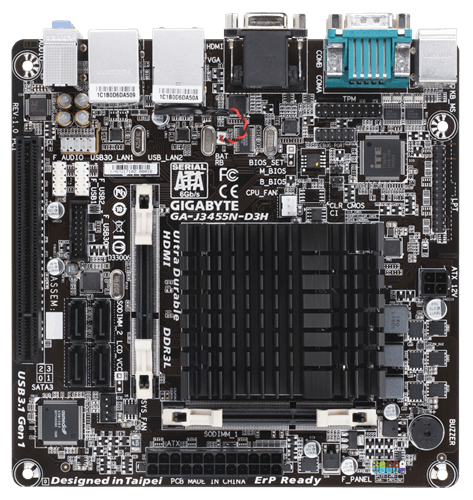
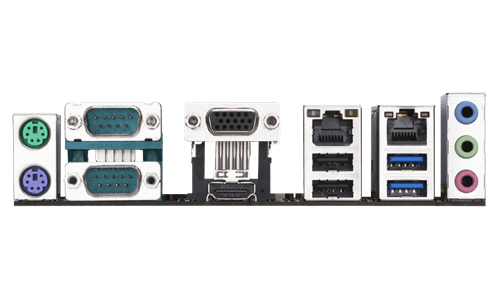
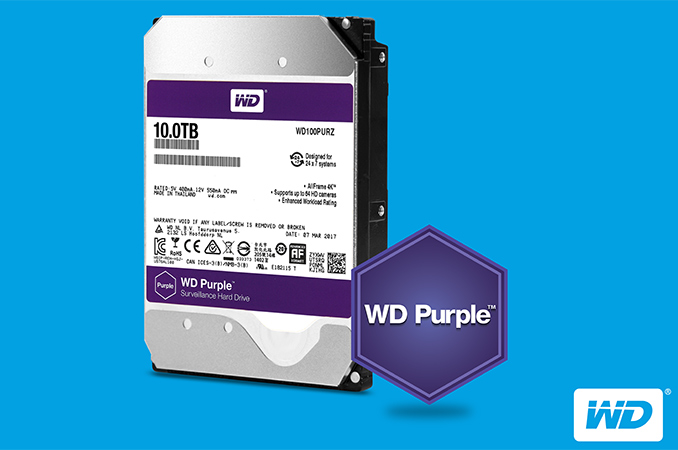
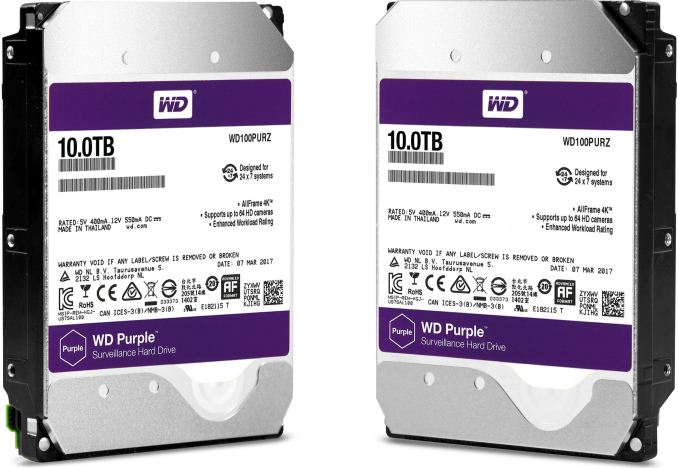
















Bookmarks